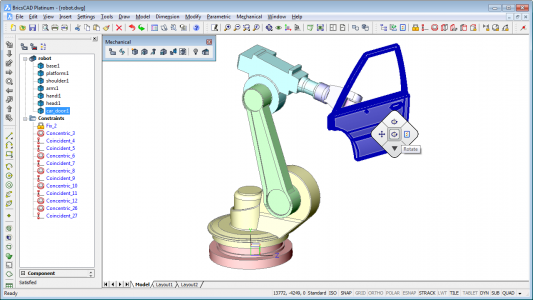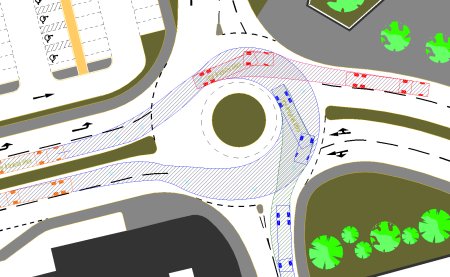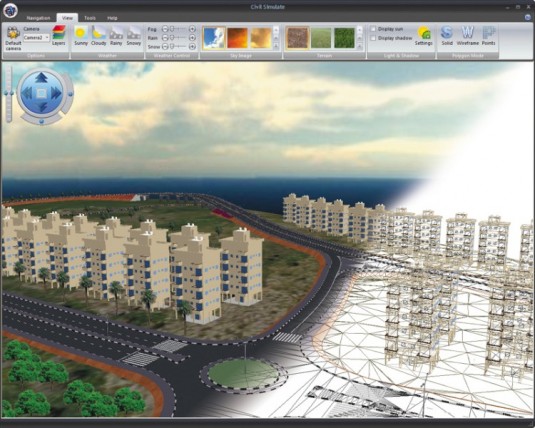New tools for mechanical design and product data management are coming. More than 700 third-party developers now build on the BricsCAD foundation.
Despite what the makers of 3D CAD modeling software like to say, the .DWG data format popularized by Autodesk still rules every design discipline. Every MCAD vendor offers some sort of 2D toolset as well as compatibility with .DWG. Quite a few offer 2D CAD products for free so their customers don’t have to spend money with Autodesk—even though most do anyway.

There was a time when it seems low-cost AutoCAD clones would become a fixture in the market. But for a variety of reasons—including the IBM effect (as in “nobody ever got fired for buying IBM”)—they never took off. Today the AutoCAD product line remains the most popular CAD brand in the world; AutoCAD LT consistently outsells Adobe Photoshop.
Despite the near-monopoly influence of the .DWG file format, small vendors still make money finding niche ways to ride in AutoCAD’s wake. The most successful is Bricsys, the Ghent, Belgium developer of BricsCAD, which started life in 2002 as a low-cost AutoCAD clone. The company’s fortunes improve when it moved from being a licensed reseller of IntelliCAD, a built-by-committee AutoCAD knock-off, and decided to create an alternative development ecosystem for .DWG-based design applications based on the newer DWG-compatible development platform Teigha from the Open Design Alliance. Today Bricsys has more than 700 development partners around the globe, a world-class posse of programmers acquired from Russian CAD think tank Ledas, and an application programming interface (API) called BRX that has become a superset of the AutoCAD API, ARX.

At its third annual international developers’ conference last week in Amsterdam, Bricsys revisited the past just long enough to paint a picture of what comes next. “DWG stays priority number one,” says Bricsys CEO Erik de Keyser. “But we intend to add new things, within the boundaries of DWG compatibility. We intent to support and extend API’s continually.”
de Keyser described the Bricsys development community as “700-plus small islands” and said his goal was to help them become a continent. Most sales of BricsCAD go through these developers, who add specialty products. Some of these developers also write custom programs that run with AutoCAD, but each year a few more decide to concentrate on BricsCAD.
A copy of AutoCAD retails (depending on locale) for around $4,195; a copy of basic BricsCAD is around $500. Third-party application developers can add a $1000 or more to the price with their custom application and still undercut the competition by thousands. From Turkish architectural software to civil engineering software for Poland, there are a wide variety of custom applications in small markets running custom software based on BricsCAD.
While the Bricsys market is robust in most parts of the world, it is still virtually unknown in North America. But there are exceptions. Tyco International has sold a custom fire-suppression design system called SprinkCAD since 1986. It first used Generic CADD as its CAD platform, but switched to AutoCAD after Autodesk bought and buried the retail CAD upstart. For several years it has developed SprinkCAD on both AutoCAD and BricsCAD, and now sells some versions only on the BricsCAD platform. Autotrack is the product of UK-based civil engineering firm Savoy Computing; it specializes in vehicle path analysis and is considered the gold standard. A majority of US DOT’s use and specify the software, and it is the de facto standard in the UK. Savoy is platform agnostic, running on AutoCAD, Bentley MicroStation and BricsCAD. Savoy’s Mike Hutt said each year the company sells an increasing percentage of its product on BricsCAD.

Looking ahead
The DWG format is thought of as 2D only, but has supported 3D entities for years—just not the kind of sophisticated 3D solids modeling employed by the likes of SolidWorks, Creo (formerly Pro/Engineer), or Catia. Bricsys believes that despite the competition, there is room for the Bricsys approach to design software in the mechanical CAD (MCAD) marketplace. More than 50% of the CAD industry is devoted to MCAD, and de Keyser says to grow Bricsys must address it directly. Not with 2D legacy products but with new 3D tools that work inside the familiar UI. “3D is the real connector with data; 2D is historically important,” says de Keyser. “If we are just a partial application, we will lose business and eventually developers.” de Keyser quoted SolidWorks CEO Bertrand Sicot, who said earlier this year that only about 33% of the potential market for 3D modeling has been tapped. “We intend to get our share of that market.”
At the conference Bricsys demonstrated new 3D functionality that makes 2D drafting and 3D modeling a unified solution yet still saves the data out to the .DWG format. “No more need to use different software for 2D drafting and 3D mechanical design,” notes Dr. Dmitry Ushakov, who came to Bricsys from Ledas and now runs R&D from an outpost in Siberia in which more than 25% of the programming staff have Ph.D.’s. Parametric design is available for both 2D and 3D entities, as well as new variational modeling features that quickly turn geometric primitives into complex objects. There was also a demonstration of kinematic analysis, showing real-time part movement. There’s plenty coming in the next release of BricsCAD for MCAD that has never been a part of AutoCAD Mechanical, which is still a steady seller for Autodesk despite its Inventor 3D product line.
De Keyser emphasized more than once that geometry is just another form of data, and that any CAD company wishing to offer a complete development environment must address data management. To that end Bricsys introduced new technology called Chapoo (“Sha-poo”) to replace and extend its older data management product Vondle. Chapoo will come in two versions; the core product will be free and offer 1 GB of cloud storage and a basic data management and collaboration interface. It is a cloud application and will be accessible from desktops, tablets, and smartphones. Chapoo+ will be a more robust version meant as an additional development platform for BricsCAD developers and anyone who purchases BricsCAD Platinum. (By the way, de Keyser says “chapoo” doesn’t mean anything in particular; he says it is just a nice word to name a product. But journalists at the conference had fun pointing out on Twitter that “chapoo” means “bitter leaf” in Thai, that a Battle of Chapoo was fought during the First Opium War, and that a Wedgewood China pattern is called Chapoo. ) Bricsys expects to release the free version before the end of 2012; the paid version will be folded into a mid-year update of BricsCAD in early 2013.

Our take
In its early years Bricsys had an annual goal of making a “black zero,” of not being in the red at year’s end. Today Bricsys can afford to take every employee and their family members on an annual holiday; this year it was to Portugal. There were no end-users at the developers’ conference, so there was no opportunity for journalists to talk to the rank-and-file about the products. But developers in attendance seemed to be genuinely pleased with their platform provider. As one told us, if we call Bricsys about a problem they get back to us immediately; if we call Autodesk about a problem we might be weeks getting an answer.
The CAD marketplace seems to have an unabated appetite for 2D, despite—or perhaps, because of—the sophistication of today’s 3D MCAD products. By extending its .DWG-compatible foundation to cover MCAD fundamentals, little David Bricsys opens another front on the war with Goliath Autodesk. We don’t expect the giant’s head to come tumbling down, but are confident Bricsys employees can continue to plan for a few more corporate vacations.
Related
Bricsys delivers viable alternative universe for DWG-based CAD development





